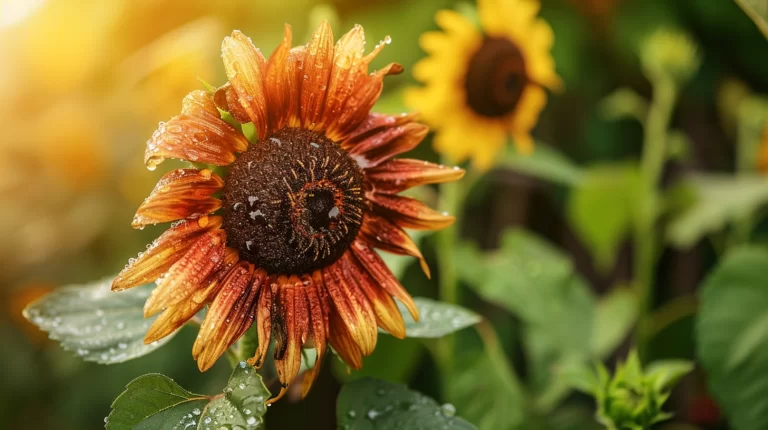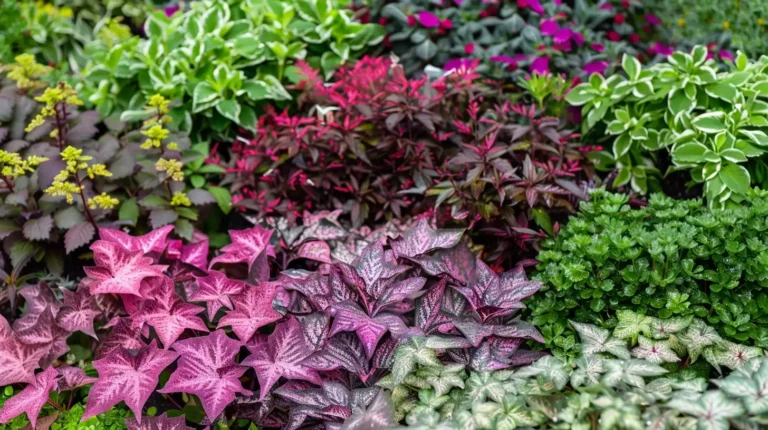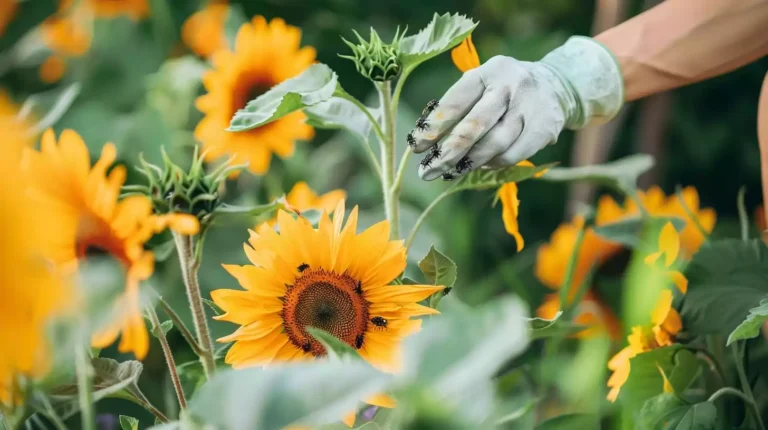Garden Resilience: Learn How to Get Rid of Wild Sunflowers
Ever found your garden playing host to the unexpected guests known as wild sunflowers?
I certainly have, and while their golden blooms are a sight to behold, managing their exuberance can be a gardening challenge.
Continue reading below where I share my experiences and proven techniques on how to get rid of wild sunflowers effectively.
So, if you’re ready to turn the tide and restore balance to your green oasis, join me on this journey as we uncover the secrets to maintaining a vibrant and well-tamed garden. Let’s get started!
Continue Reading to Understand These Key Concepts:
- Observe the plant’s height, leaves, stem, and flower heads for accurate identification
- Use manual removal techniques like watering the soil, using the right tools, and ensuring complete removal of the root system
- Safely utilize herbicides by selecting the appropriate one, wearing protective gear, applying directly to the leaves, and avoiding spray drift
- Implement natural control methods such as manual removal, tilling the soil, applying organic mulch, cultivating competitive plants, and maintaining an eco-friendly garden
Identifying Wild Sunflowers
Before I tackle the removal process, it’s crucial to accurately identify the numerous species of wild sunflowers that might be growing on your property.
Often mistaken as simple weeds, wild sunflowers can range from the common roadside Helianthus annuus to the more reclusive Helianthus petiolaris. It’s their distinctive characteristics that’ll help you distinguish one species from another:
- Firstly, observe the plant’s height. Wild sunflowers can tower up to 10 feet, but some species remain closer to the ground.
- Check the leaves too; they can be broad or narrow, heart-shaped or lanceolate, with smooth or serrated edges.
- The stem’s hairiness—or lack thereof—is another telltale sign.
- The flower heads themselves are a giveaway. Although they share the iconic yellow petals, the size and number of blooms can vary greatly. Some wild sunflowers have single, large heads, while others boast several smaller ones.
It’s these subtle details that’ll guide you in identifying the specific type of wild sunflower you’re dealing with.
Manual Removal Techniques
Once I’ve pinpointed the type of wild sunflower in my yard, I’ll start the manual removal process by pulling them out by hand, ensuring I get as much of the root system as possible.
This is critical because if any root fragments are left behind, they can potentially regenerate into new plants.
Here’s how I do it effectively:
- Water the Soil: I make sure to water the area beforehand, as moist soil makes it easier to remove the entire root. This reduces the chance of breakage, minimizing the risk of regrowth.
- Use the Right Tools: For stubborn plants, I’ll use a garden fork or shovel to loosen the soil around the roots, which allows me to extract more of the root structure without snapping it.
- Regular Monitoring: After the initial removal, I’ll keep an eye on the area for a few weeks. Any sign of new growth means I need to repeat the process promptly to prevent the sunflowers from re-establishing.
Utilizing Herbicides Safely
If manual removal hasn’t fully eradicated the wild sunflowers, I’ll consider using herbicides, ensuring I follow the label’s safety instructions closely.
I am always aware of selecting the right product for the specific type of vegetation I’m targeting. I’ll look for herbicides labeled for use against broadleaf plants, which typically work well against wild sunflowers.
I always wear protective gear before I start—the label will specify what I need, but it usually includes gloves, long sleeves, and eye protection. I’ll also make sure it’s a calm day to prevent spray drift to desirable plants or my neighbor’s yard.
When mixing the herbicide, I’ll use the exact proportions recommended on the label. More isn’t better; it’s just wasteful and potentially harmful.
I’ll apply it directly to the leaves of the wild sunflowers, avoiding soil and water sources to prevent contamination.
After I’m done, I’ll clean my equipment thoroughly and wash myself to remove any traces of chemicals. I’ll store leftover herbicide in its original container, out of reach of children and pets.
Natural Control Methods
While chemical solutions can be effective, I’m also exploring natural control methods to manage the wild sunflower population in my garden.
It’s essential to understand that these methods aren’t only eco-friendly but can also be quite efficient when done correctly.
Here’s how I tackle this issue:
- Manual Removal: I start by uprooting the plants, ensuring I get as much of the root system as possible to prevent regrowth. This method is labor-intensive but highly effective for immediate results.
- Cultivation: Before the wild sunflowers have a chance to seed, I till the soil. This disrupts the growth cycle and can help reduce the number of new plants sprouting in the future.
- Mulching: I apply a thick layer of organic mulch around my desired plants. This suppresses the growth of wild sunflowers by blocking sunlight and preventing seed germination. Additionally, mulch adds nutrients to the soil as it decomposes, benefiting my garden overall.
Preventing Future Growth
After implementing natural control methods, I’ll focus on several strategies to prevent wild sunflowers from returning to my garden. It’s crucial to maintain vigilance to ensure these opportunistic plants don’t reclaim their territory.
Firstly, I’m diligent about monitoring my garden regularly. Catching new sprouts early is key; if I spot them, I remove them immediately before they have a chance to establish or set seed.
I’m also careful to maintain a thick layer of mulch, which suppresses growth by blocking sunlight to any potential sunflower seedlings.
Additionally, I’ve learned that maintaining healthy soil and competitive plants is essential. I cultivate robust native or desired plants that can outcompete wild sunflowers for resources.
By doing so, I create an environment less hospitable for the sunflowers to thrive.
I also avoid tilling the soil, which can bring dormant seeds to the surface and give them the light they need to germinate.
When I do need to disturb the ground, I’m swift to replant or mulch the area to prevent sunflowers from taking advantage of the bare soil.
Final Thoughts
After hours of battling those stubborn wild sunflowers, I’ve learned that persistence is key.
It’s like weeding out self-doubt from your mind’s garden; it takes time and effort, but the peace afterward is worth it.
By combining manual removal, careful herbicide use, and natural deterrents, I’ve reclaimed my garden.
Remember, prevention is your best ally; don’t let an unwanted seed of doubt—or sunflower—take root again.
Here’s to clear, sunflower-free gardens and minds!






